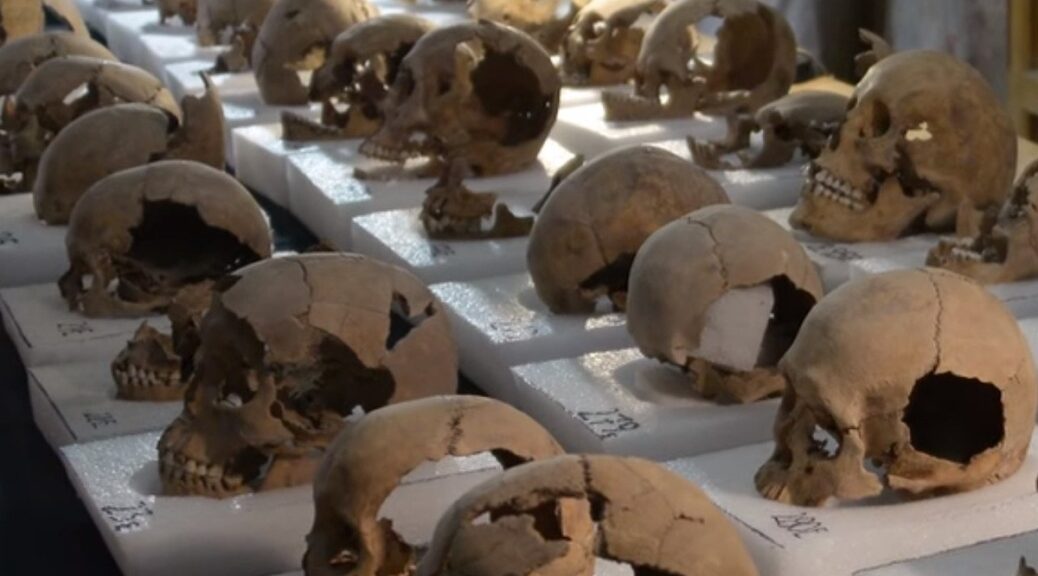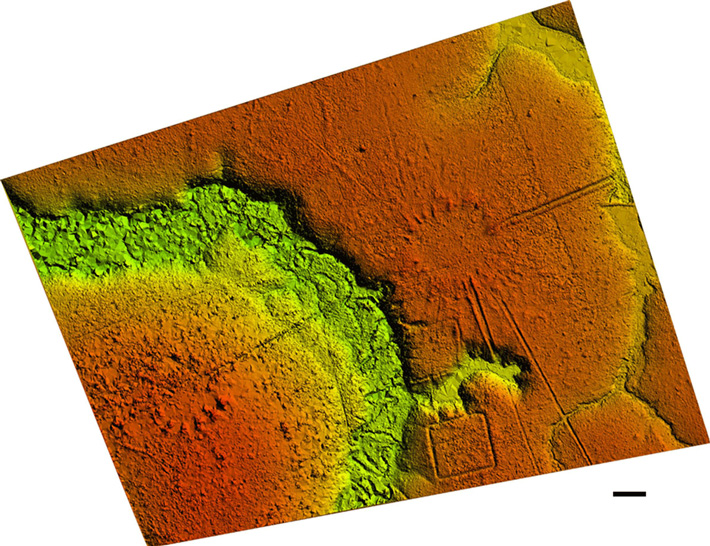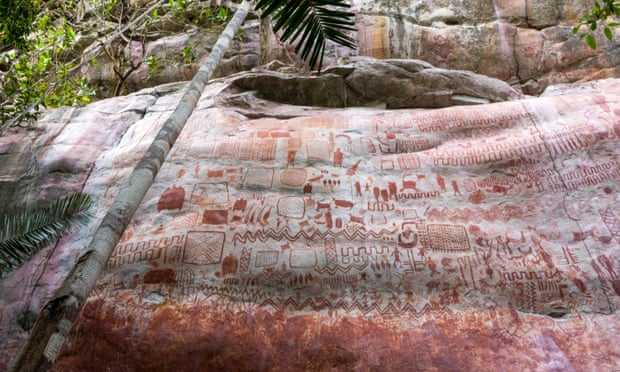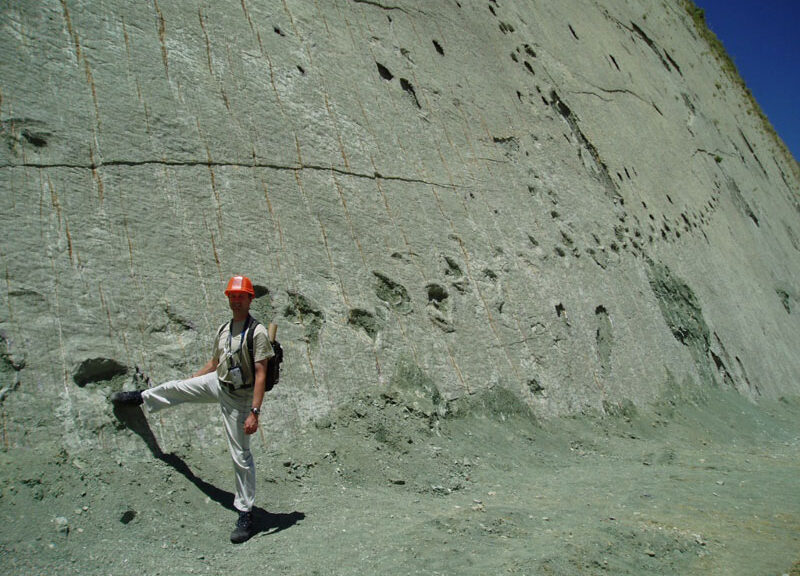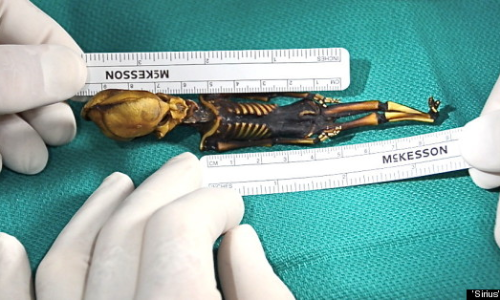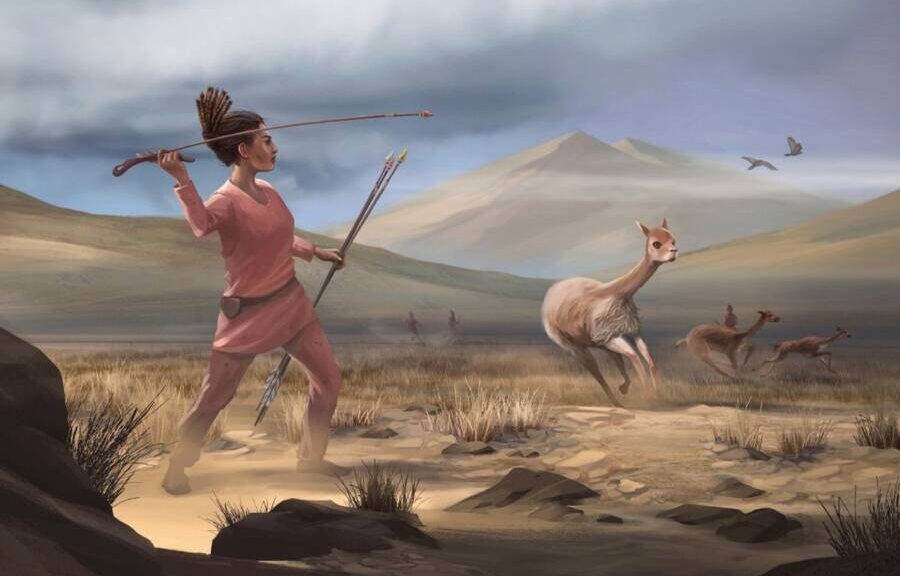A bizarre chicken-sized dinosaur named lord of the spear is discovered in Brazil
With a mane of yellow and brown fur down its back and long ‘needles’ growing from its shoulders, a peacock-like elaborate dinosaur has been identified. The neck spines of the creature are rare in the fossil record and made of keratin, which is the same protein that makes up parts of our hair, nails and skin. Dubbed Ubirajara jubatus, indigenous Indian for ‘Maned Lord of the Spear’
Experts led from the University of Portsmouth believe the flamboyant spines may have been used to impress prospective mates, and that the dinosaur may have indulged in ‘elaborate dancing’ to show them off.
The needle-like displays were positioned so they would not impede the dinosaur’s arms and legs — and would not have stopped it from hunting, preening or sending signals.
Ubirajara jubatus lived around 110 million years ago, during the Cretaceous period, the researchers explained. The new species was originally unearthed in 1995 in the Chapada do Araripe in north-eastern Brazil, and was found among the collections of the State Museum of Natural History in Karlsruhe, Germany. The find could explain where birds like peacocks inherited their ability to show off, the team said. Birds are the modern descendants of dinosaurs.
‘What is especially unusual about the beast is the presence of two very long, probably stiff ribbons on either side of its shoulders,’ said paper author and palaeontologist David Martill of the University of Portsmouth. These, he explained, ‘were probably used for display, for mate attraction, inter-male rivalry or to frighten off foes.’
‘We cannot prove the specimen is a male, but given the disparity between male and female birds, it appears likely the specimen was a male — and young, too, which is surprising given most complex display abilities are reserved for mature adult males.’
‘Given its flamboyance, we can imagine that the dinosaur may have indulged in elaborate dancing to show off its display structures.’
‘These are such extravagant features for such a small animal — and not at all what we would predict if we only had the skeleton preserved,’ said paper author and palaeontologist Robert Smyth, also of the University of Portsmouth.
‘Why adorn yourself in a way that makes you more obvious to both your prey and to potential predators?’ he mused. The truth is that for many animals, evolutionary success is about more than just surviving — you also have to look good if you want to pass your genes on to the next generation.’
‘Modern birds are famed for their elaborate plumage and displays that are used to attract mates — the peacock’s tail and male birds-of-paradise are textbook examples of this.’
‘Ubirajara shows us that this tendency to show off is not a uniquely avian characteristic, but something that birds inherited from their dinosaur ancestors.’


The fossil specimen of Ubirajara jubatus sports a section of extremely-well preserved mane. Long and thick, this would have run down the animal’s back. The researchers believe that the mane would have been manipulated by muscles — allowing it to be lifted, much like a dog raises its hackles when it feels threatened. Ubirajara would have been able to lower the mane flush to its skin when not putting on a display, allowing it to move fast without getting tangled in vegetation.
Its arms were also covered in fur, the team noted.
‘Any creature with movable hair or feathers as a body coverage has a great advantage in streamlining the body contour for faster hunts or escapes but also to capture or release heat,’ explained Professor Martill.
‘We know lots of dinosaurs had bony crests, spines and frills that were probably used for display but we don’t see these very often in living birds,’ said Mr Smyth.
‘In birds, crests are made of feathers. This little dinosaur provides some insight into why this might be the case.’ Bone requires a lot of energy for a body to grow and maintain. It’s also heavy and can cause serious injury if broken,’ he continued.
‘Keratin — the material that makes up hair, feathers and scales — is a much better display alternative for a small animal like this one. Keratin is less costly for a body to produce, it’s also lightweight, flexible and can be regularly replaced if damaged.’
‘Ubirajara is the most primitive known dinosaur to possess integumentary [external] display structures. It represents a revolution in dinosaur communication, the effects of which we can still see today in living birds.’
The specimen was originally excavated by palaeontologist Eberhard Frey of the State Museum of Natural History Karlsruhe. It came out of the ground in two pieces. X-ray scans revealed previously hidden skeletal elements and soft tissue, from which the researchers were able to build a clearer picture of Ubirajara in life. Ubirajara jubatus is the first non-avian dinosaur to be discovered in a fossil-rich rock formation known to geologists as the Crato Formation.
At the time this was being deposited, the South Atlantic was opening up in a long narrow shallow sea, which accounts for the exquisite preservation of Ubirajara. The find is also important for the Americas, explained paper author and palaeontologist Hector Rivera Sylva, who curates the Desert Museum, in Mexico.

‘The Ubirajara jubatus is not only important because of the integumentary structures present for the first time in a non-avian dinosaur — completely changing the way of seeing the behaviour of certain dinosaurs,’ he added.
Rather, the find provides ‘the first evidence for this group in Latin America, as well as one of the few reported for the subcontinent of Gondwana,’ he explained.
This, he added, expands our ‘knowledge about non-avian feathered dinosaurs [in] America, whose evidence is very scarce.’ The full findings of the study were published in the journal Cretaceous Research.

